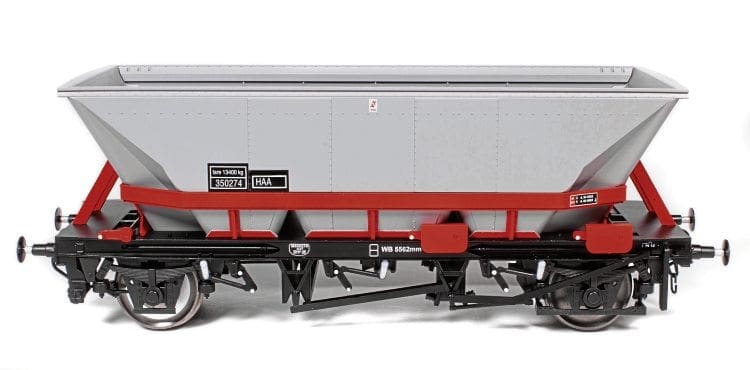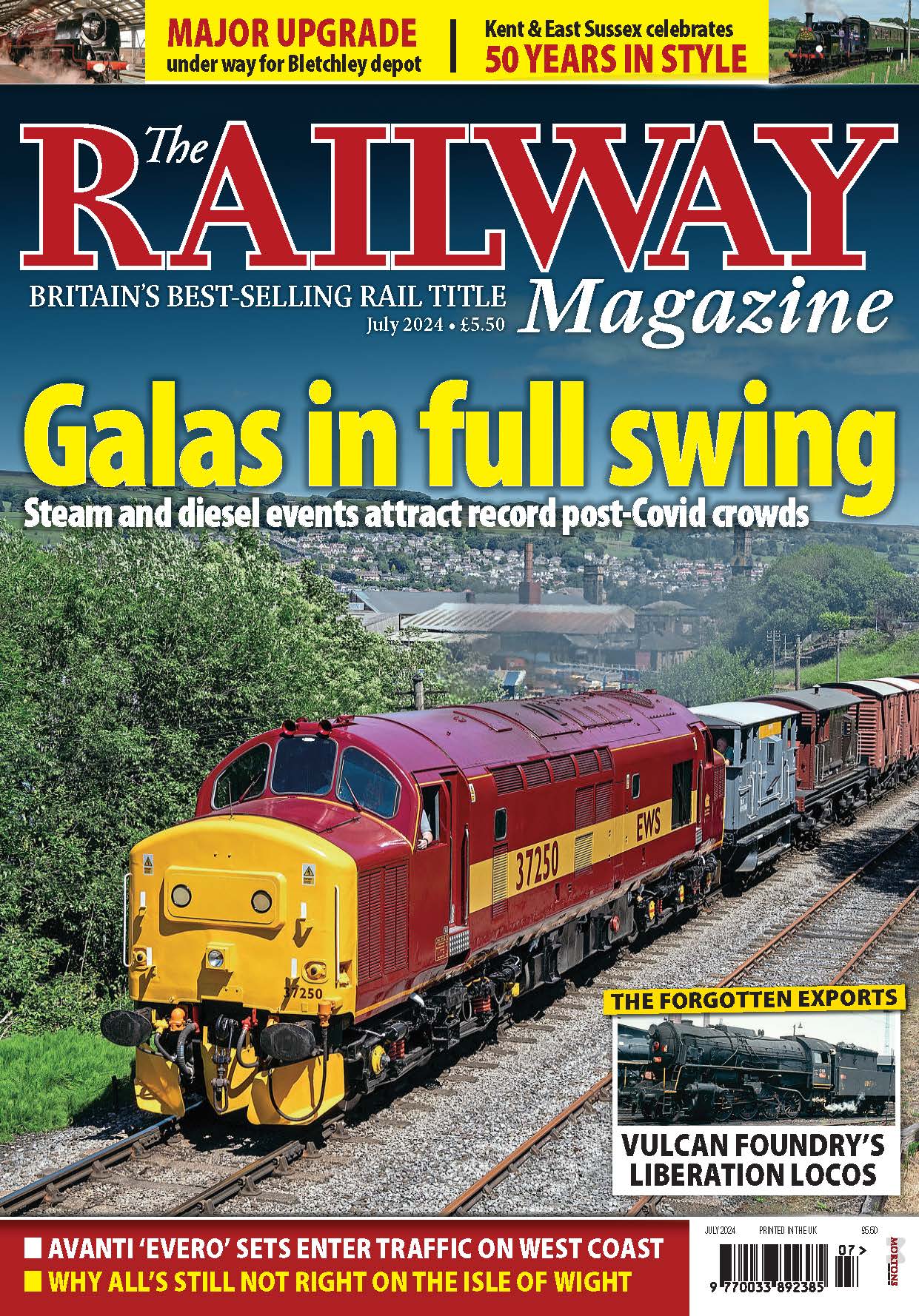As Dapol releases its superbly well-detailed O-gauge MGR coal hopper wagon, Nigel Burkin is impressed by the very attractive price that’s being asked for such a complex model.
The MGR wagon story is a remarkable one that started in the mid-1960s when air-braked hopper wagons were introduced for coal haulage between colliery and power station, together with some industrial coal flows. It was a totally new design which revolutionised bulk coal handing, replacing many ageing BR standard wagons such as the HOP24. Like the HST and Mk 2 coaches, the MGR wagon is a railway design icon for the time and a symbol of rail modernisation under BR.
To accommodate the long trains of MGR wagons, infrastructure at power stations was designed with large loop tracks, allowing trains to be discharged efficiently without the need to run the train locomotive around the stock for the return run to the loading point. Discharge of MGR wagons was automated, with a mechanical lever system which opened and closed the discharge doors using trackside equipment known as ‘Daleks’.
Unless there was a problem, the discharge process was automatic, requiring no manual operation. Discharge required the train locomotive to work at a constant speed of 0.5mph through the unloading terminal to prevent conveyor belts from becoming overloaded and clogged.

An electronic Slow Speed Control system was fitted to the Class 47/3 fleet commonly used in MGR operation, along with Class 56s and 58s. A small number of BR locomotives of other classes received Slow Speed Control, including Class 20s and 26s.
Upon introduction, Classes 60 and 66 locomotives were also capable of operating through MGR unloading points.
A large number of the MGR wagons were built, mostly at Shildon, and coded HAA under the TOPS system. No fewer than 10,702 of the standard HAA wagons were constructed, with an additional 460 upgraded wagons added to the fleet in 1982, coded HDA.
MGR wagons spread their wings to industrial coal operations, including deliveries to Hope cement works and steel works such as Scunthorpe. Their decline started with the downturn in coal mining in the UK, together with the take-up of alternative generation fuels such as natural gas.
Some MGR wagons were reallocated to different traffics with varying degrees of success, including a handful modified for china clay traffic.
For the full article, see the January 2019 edition of Modelling – available now!
For a complete list of stockists and how to get your copy, visit: www.railwaymagazinemodelling.co.uk/distributors
Advert




